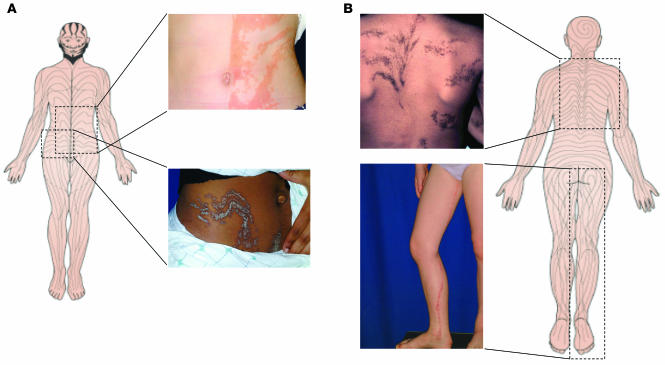Figure 1.
The lines of Blaschko, originally described in 1901, are thought to trace the pathway of ectodermal cell development. These lines are linear on the extremities, S-shaped on the anterior trunk, and V-shaped on the back. Epidermal nevi are examples of cutaneous mosaicism in which the localized thickening of the epidermis is patterned along the lines of Blaschko. This figure illustrates several forms of epidermal nevi and the correlation of their orientation with the lines of Blaschko. A shows two verrucous (or keratinocytic) forms of epidermal nevus on the anterior (upper image) and anterolateral (lower image) regions of the trunk that correlate nicely with the lines of Blaschko, shown schematically. Similarly, B shows epidermal nevi of the epidermolytic hyperkeratotic type (upper image) in a curvilinear configuration and an inflammatory linear verrucous form of epidermal nevus on the leg (lower image). The molecular mechanism underlying the defect is known for only one of these clinical manifestations, the epidermolytic hyperkeratotic form of epidermal nevus. The 6-year-old girl shown in B showed a missense mutation in keratin 10 in cultured keratinocytes from lesional, but not normal-appearing, skin.

